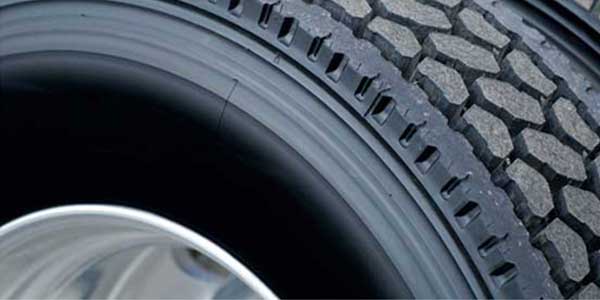During the winter driving season, traction in snow, ice and slushy road conditions are always a concern. A thorough inspection of tires is always important, but becomes even more so when winter begins. Tire-related roadside service calls are no fun any time of the year, but winter weather can make those situations particularly brutal. With the average tire roadside call lasting more than two and a half hours, it is critical to minimize tire issues. The highway patrol can issue citations for blocking the road and unsafe conditions. Just-in-time delivery penalties can be significant. Tire inspection should begin with tread depth measurements across the complete tread surface. It is best to measure tread depth in two locations, usually 180 degrees apart. DOT minimum tread depth measurements are 4/32-in. for steers and 2/32-in. for drives, trailer and dolly tires. It is in your fleet’s best interest to have tires with more tread remaining rather than less. Traction and stopping distance is always enhanced with higher tread depth. Drive tires, in particular, have a significant impact on stopping distance. Additionally, a deep lug design is preferred over a multi-rib tread pattern.
Checking tires for cuts, sidewall snags and tread punctures is important. It’s best to make tire repairs now to avoid being stuck on the side of the road. If the tires are not wearing smoothly and evenly around the tire, the question is: why? Check to see if the vehicle is out of alignment. If the tractor is in proper alignment then a misaligned trailer can cause irregular wear to develop not only on the trailer tires but also on the steer and/or drive tires. Tire under-inflation will also lead to irregular tire wear. Tire pressures should be checked using a calibrated tire pressure gauge. Tire pressure gauges are not typically accurate even when they are brand new. It is important to calibrate your gauges at least weekly. Many gauges cannot be calibrated, and that means they are not accurate. Trash them and find a new gauge.
When determining the proper tire inflation pressure, always consult the load/inflation tables published by the tire manufacturers. Regardless of specific manufacturer, a given tire size and load range will have the same recommended pressure. The inflation pressure is based on the worst case load the tire will experience in the real world. It is not based on the average load. Air is what carries the load. Once you know the worst-case load, the tables will tell you the recommended tire pressure.
In severe weather conditions, the use of tire chains will be very helpful in providing additional traction. Chains are mandatory when crossing over the mountains in the winter.
Laws vary from state to state and in Canada when it comes to the use of tire chains. In many cases, trucks can be fined and placed out of service by the CVSA if it is determined that travel is hazardous due to snow and ice if tire chains are not being used.
There are three types of traction devices which are grouped collectively under the term “tire chains:” conventional steel link chains; cable chains constructed with high-strength steel spring cross member rollers; and Automatic traction devices (ATDs). ATDs are mounted under the vehicle and sling rotating chain segments under the inside drive wheels as the vehicle rolls down the highway.
Each state has different rules when it comes to these three types of tire chains. Some states allow all three types of tire chains while other states have restrictions on cable chains. A few states require additional tire chains if ATDs are used.
When purchasing tire chains, it is important to choose the appropriate chain size based on the tire size and specific tire design. Tire chains installed on rib tires will fit differently compared with chains installed on deep lug drive tires. It is also a good idea to check that chains have adequate clearances between the chain and the vehicle. Chains with crosslinks which are equipped with V-bars in the links will provide more starting, stopping and cornering traction compared with chains with straight crosslinks. There are ladder-style link chains that typically perform better in deep snow than ladder-style cable chains.
Work with your tire professional when choosing the best tire chain for your operation. When chains are first installed they should be applied as tight as possible by hand. After driving a quarter of a mile, the vehicle should be stopped and the chains tightened again.
Article courtesy Fleet Equipment.














